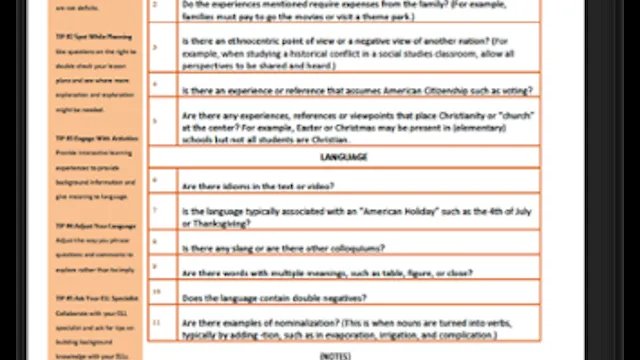Help English Language Learners Build Background Knowledge in the Classroom


Help English Language Learners Build Background Knowledge in the Classroom
It’s not uncommon for there to be a mismatch between classroom content and students’ background knowledge and experiences. I was recently reminiscing on my days spent in the classroom, I am reminded of an “ah-ha moment” when I fully grasped the importance of building background and creating context for my English Language Learners. It was during a fourth grade social studies lesson on early economics. One of my students, Jenny, was an intermediate English learner and she was completely stuck on this constructed response question: Is Joey’s money better spent on a $12 movie theater ticket or a $4 DVD rental?
As we talked through the question, it was clear that Jenny wasn’t very familiar with either option. I asked her if she had ever been to a movie theater. “No,” she said quietly as she looked around. I asked if she had a DVD player or had ever seen one before. Again, she said “no,” even more quietly. Of course. I should have known. (Her family didn’t have a car and I had recently helped them get a public library card. It’s doubtful they would have navigated through a Blockbuster membership.) There it was, a mismatch in the background experiences of a student and the content in her classroom. Does that mean she couldn’t answer a question about cost/benefits and tradeoffs? She was certainly capable at her language level. But without the background knowledge, it’s difficult to understand exactly what the question is asking.
I worked with plenty of excellent classroom teachers during my years as an ESL specialist. Despite collaboration challenges, they all wanted what was best for their ELLs and always asked about how they could shift their instruction to maximize learning. In my opinion, the more impactful teaching moments happened when these teachers realized they were not considering background knowledge differences among students. As a result, their lessons would occasionally fall flat from the very start.
Here are some quick tips that classroom teachers can use to help ELLs build background knowledge:
-
Dismiss your assumptions. The first step to building context and background knowledge is to examine your own preconceptions about your learners. It’s important to understand that different background knowledges are not deficits. There is no doubt that all students bring their own knowledge, experiences and language into the classroom. In fact, these unique qualities and characteristics can help you foster cultural awareness in the classroom. I find EdChange.org to be an incredibly valuable resource, especially handouts like this one about Multicultural Shifts for educators.
-
Identify knowledge needed before delivering the lesson. See if you can identify potential background knowledge differences while planning the lesson by using our Guiding Questions. Make sure to assess both the language and the content. Vocabulary words will probably need some extra attention during instruction. However, there will also likely be words and phrases that are known to native English speakers but not English learners.
-
Engage students with experiences and demonstrations. During classroom instruction, you have the opportunity to activate and build background knowledge that supports the content. Consider hands-on activities and demonstrations such as a field trip to kick off a unit of study, or a video clip and reading exercise on the topic.
-
Adjust your language to explore rather than imply. Pay attention to the words you use to reference experiences and make sure you are not unintentionally making assumptions. For example, start asking “Have you ever… “ instead of “You know when…” Encourage your students to explore as well and have them organize their thoughts using a content notebook or online note taking format.
So, how did I help Jenny in social studies that day? I took a few minutes to build her background knowledge about movie theaters and DVD rentals. We talked about a movie she once saw at her cousin’s house and I showed her a photo I found online of the inside of a movie rental store. We sketched out the two scenarios with 12 one dollar bills and a clock to depict the time at the theater, and repeated this process for the DVD rental scenario. Those five minutes helped her build enough understanding of the situation to answer the question with reasons for making the appropriate spending choice.
In case you are wondering, there was no correct answer to Jenny’s economics question. Another potentially confusing concept to an ELL which maybe I’ll save for another blog.
What success stories or tips do you have to share on background building activities with your students?